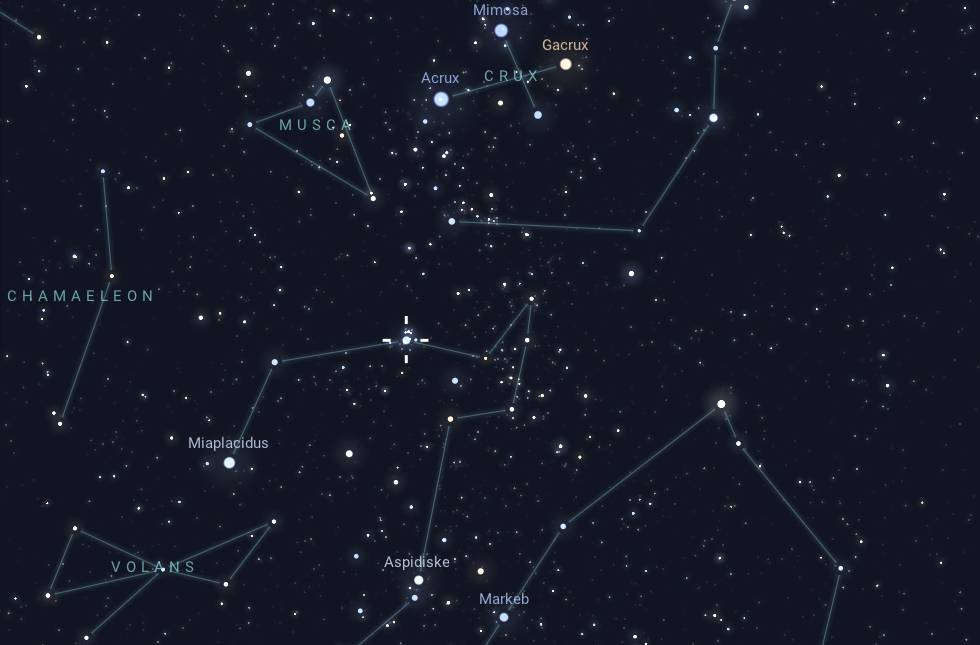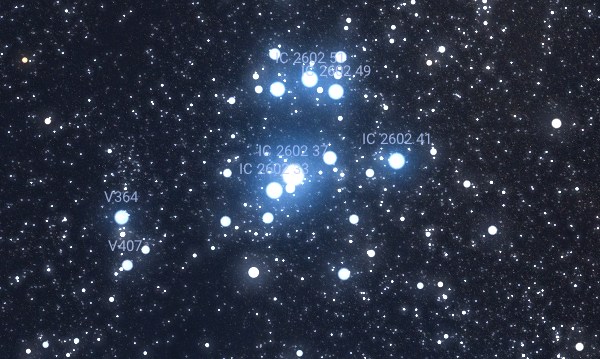The Southern Pleiades, also known as IC 2602 or Caldwell 102, is an open star cluster in the constellation Carina in the southern celestial hemisphere, located about 479 light-years from Earth. Observed by various cultures throughout history, the cluster has been known since antiquity. Danish astronomer Johan Ludvig Emil Dreyer formally catalogued it as IC 2602 in the late 19th century, recognizing it as an open star cluster—a characteristic that subsequent astronomers have confirmed and further studied.
Physical Characteristics
Containing several hundred stars, the Southern Pleiades is composed predominantly of young, blue-white stars, though a few cooler, redder stars are also present. At an estimated age of 50 to 60 million years, the cluster is relatively young and, due to its proximity to Earth, serves as an excellent site for studying early stellar evolution and the formation processes of young star clusters.
The stars within IC 2602 are held together loosely by their mutual gravitational attraction. However, unlike the tightly bound stars in globular clusters, those in open clusters like IC 2602 are only weakly bound due to the relatively low mass and broad spread of open clusters. This weaker gravitational cohesion means that over time, the cluster will gradually disperse. Gravitational interactions with nearby stars, gas clouds, or other massive structures within the Milky Way’s disk can disturb the cluster, causing stars to drift apart. Over the course of tens to hundreds of millions of years, the stars of IC 2602 will separate and blend into the galaxy’s general stellar population.
Observation
With an apparent magnitude of about 1.9, the Southern Pleiades shines brightly enough to be easily visible to the naked eye in dark skies. Spanning an area of roughly 50 arcminutes—about the size of two full moons—the cluster is best observed from the Southern Hemisphere during autumn (February to April) when Carina is high in the night sky. Although visible without optical aid, binoculars or a small telescope will enhance the view, revealing the cluster’s rich grouping of stars and distinctive features.




